Whitepaper
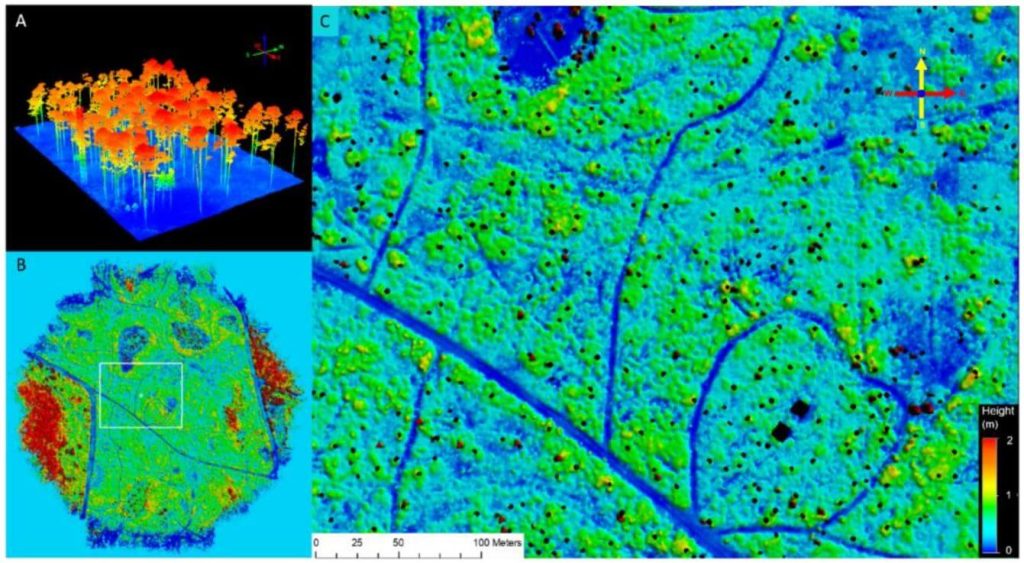
In the pine savannas of the southeastern United States, prescribed fire is commonly used to manipulate understory structure and composition. Understory characteristics have traditionally been monitored with field sampling; however, remote sensing could provide rapid, spatially explicit monitoring of understory dynamics. We contrasted pre- vs. post-fire understory characteristics collected with fixed area plots with estimates from high-density LiDAR point clouds collected using the unmanned aerial vehicle (UAV)-borne GatorEye system. Measuring within 1 × 1 m field plots (n = 20), we found average understory height ranged from 0.17–1.26 m and biomass from 0.26–4.86 Mg C ha−1 before the fire (May 2018), and five months after the fire (November 2018), height ranged from 0.11–1.09 m and biomass from 0.04–3.03 Mg C ha−1. Understory heights estimated with LiDAR were significantly correlated with plot height measurements (R2 = 0.576, p ≤ 0.001). Understory biomass was correlated with in situ heights (R2 = 0.579, p ≤ 0.001) and LiDAR heights (R2 = 0.507, p ≤ 0.001). The biomass estimates made with either height measurement did not differ for the measurement plots (p = 0.263). However, for the larger research area, the understory biomass estimated with the LiDAR indicated a smaller difference after the burn (~12.7% biomass reduction) than observed with in situ measurements (~16% biomass reduction). The two approaches likely differed because the research area’s spatial variability was not captured by the in-situ measurements (0.2% of the research area measured) versus the wall-to-wall coverage provided by LiDAR. The additional benefit of having spatially explicit measurements with LiDAR, and its ease of use, make it a promising tool for land managers wanting greater spatial and temporal resolution in tracking understory biomass and its response to prescribed fire.
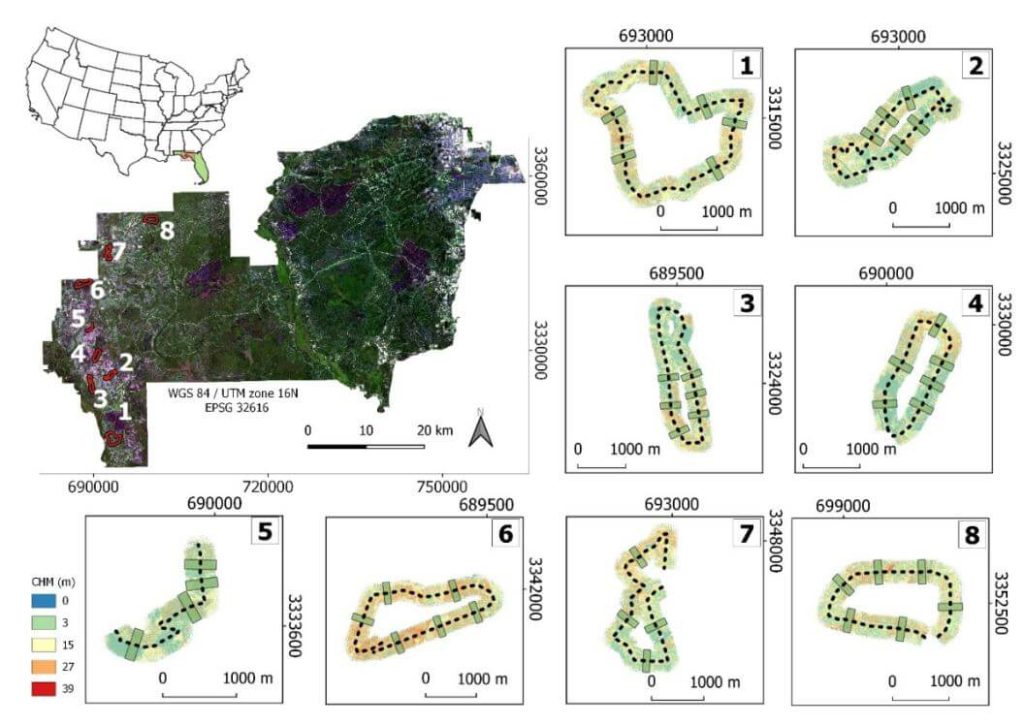
Changes in forest canopy structure due to natural disturbances, such as storms and hurricanes, can be monitored with high accuracy from active remote sensors such as LiDAR. The most common LiDAR data, able to perform large area ecosystem characterization, are acquired from aircraft platforms that demand a high operating cost and dependence on specialized companies and require medium-term planning, which often leads to long delays in data becoming available to decision makers.
These shortcomings considerably burden its efficacy for rapid response to natural disasters, which is a significant drawback for practical applications of airborne LiDAR. In contrast, unmanned aerial vehicles (UAV) are autonomous alternatives that allow rapid logistical planning and data collection over relatively large areas (hundreds to thousands of hectares). One of the main limitations of battery-powered UAV systems is the low flight efficiency due to their dependence on battery capacity.
It is, thus, of critical importance to develop sampling methods based on UAV single-pass surveys, which allow rapid large area assessment by concentrating in sampling locations of timely interest only. While airborne LiDAR sampling has been widely developed for very large area assessments, no study has yet tested the efficiency of single-pass flight sampling designs, more suited for UAVs.
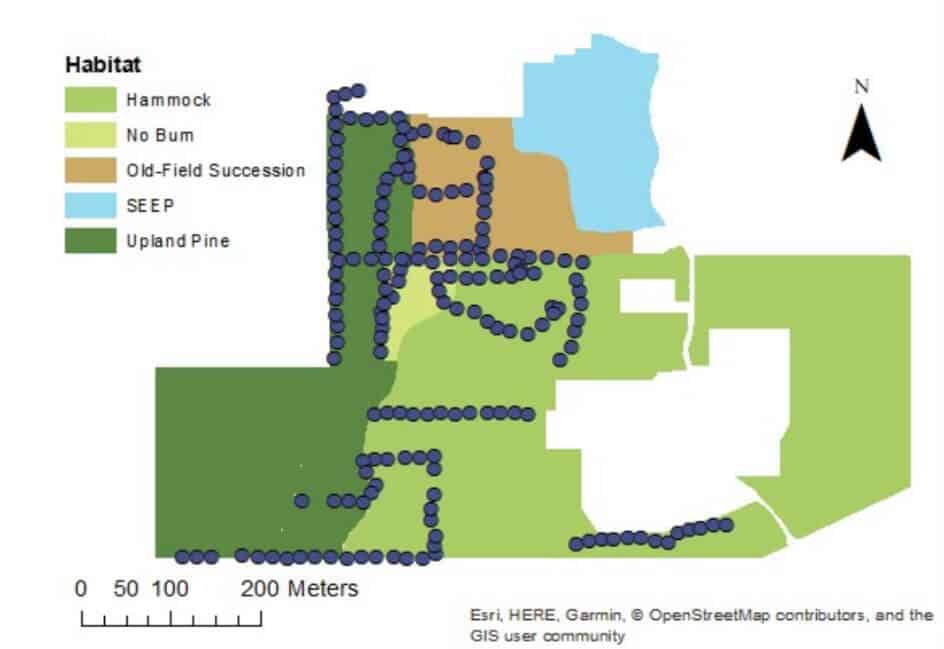
Remote sensing techniques have many applications for natural resource management and conservation, such as habitat analysis, measuring forest carbon stocks, protected area delineation, landscape modeling, and human impact surveys (e.g., logging, mining). Currently, among the remote sensing methodologies, light detection, and ranging (lidar) is the most accurate tool for quantifying forest structure characteristics.
These measures are accurate in a wide range of forested ecosystems and even have applications in urban settings. Unlike photogrammetric systems which use passive sensors requiring sunlight to illuminate the area of interest, lidar sensors actively emit laser pulses to create three-dimensional point clouds. When point cloud density is high, lidar can be used for measuring tree height, identifying tree species, estimating crown canopy profile, estimating biomass, and generating carbon projections at various spatial scales. Lidar sensors can be satellite or aircraft-borne, deployed above and below the canopy with unmanned aerial vehicles (UAVs), or ground-based.
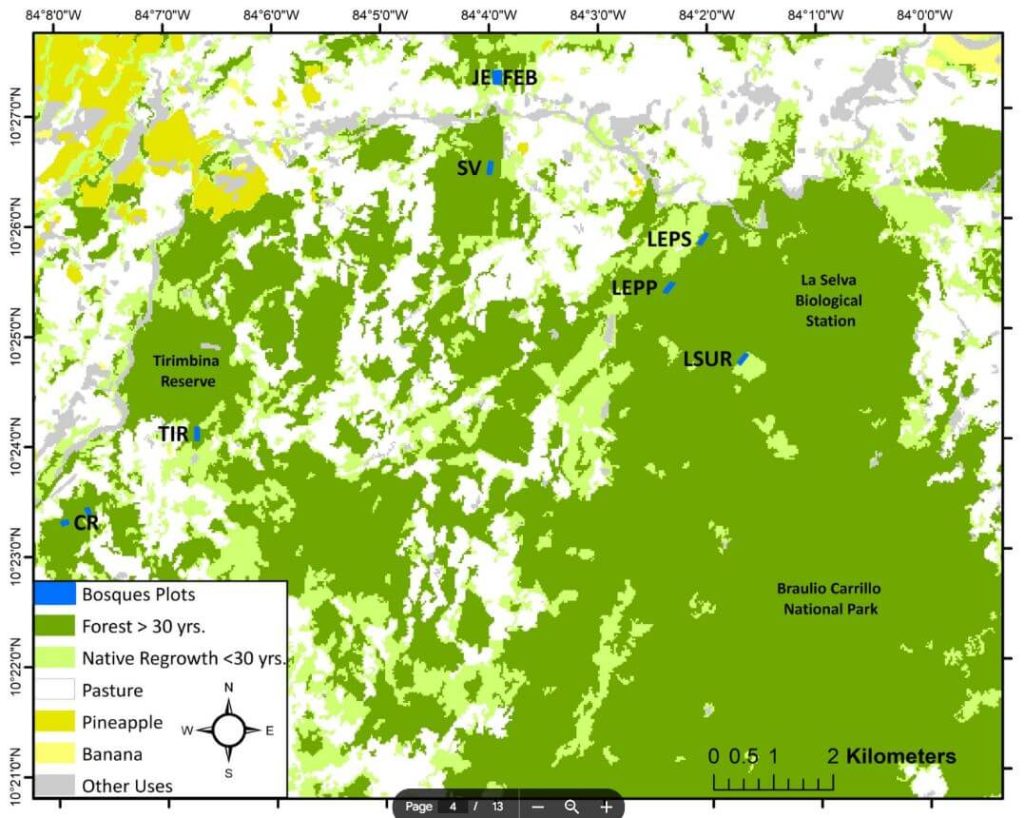
Drone-based remote sensing is a promising new technology that combines the benefits of ground-based and satellite-derived forest monitoring by collecting fine-scale data over relatively large areas in a cost-effective manner. Here, we explore the potential of the GatorEye drone-lidar system to monitor tropical forest succession by canopy structural attributes including canopy height, spatial heterogeneity, gap fraction, leaf area density (LAD) vertical distribution, canopy Shannon index (an index of LAD), leaf area index (LAI), and understory LAI. We focus on these variables’ relationship to aboveground biomass (AGB) stocks and species diversity. In the Caribbean lowlands of northeastern Costa Rica, we analyze nine tropical forests stands (seven second-growth and two old-growth). Stands were relatively homogenous in terms of canopy height and spatial heterogeneity, but not in their gap fraction. Neither species density nor tree community Shannon diversity index was significantly correlated with the canopy Shannon index. Canopy height, LAI, and AGB did not show a clear pattern as a function of forest age. However, gap fraction and spatial heterogeneity increased with forest age, whereas understory LAI decreased with forest age. Canopy height was strongly correlated with AGB. The heterogeneous mosaic created by successional forest patches across human-managed tropical landscapes can now be better characterized. Drone-lidar systems offer the opportunity to improve assessment of forest recovery and develop general mechanistic carbon sequestration models that can be rapidly deployed to specific sites, an essential step for monitoring progress within the UN Decade on Ecosystem Restoration. [register below to download full whitepaper]
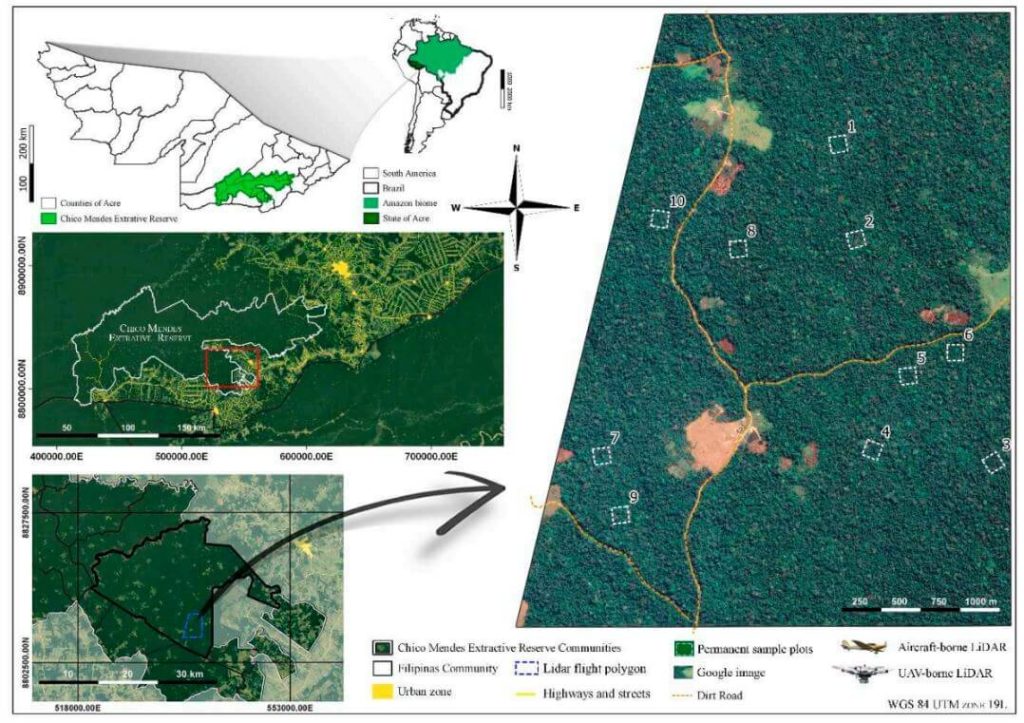
Tropical forests are often located in difficult-to-access areas, which make high-quality forest structure information difficult and expensive to obtain by traditional field-based approaches. LiDAR (acronym for Light Detection And Ranging) data have been used throughout the world to produce time-efficient and wall-to-wall structural parameter estimates for monitoring in native and commercial forests. In this study, we compare products and aboveground biomass (AGB) estimations from LiDAR data acquired using an aircraft-borne system in 2015 and data collected by the unmanned aerial vehicle (UAV)-based GatorEye Unmanned Flying Laboratory in 2017 for ten forest inventory plots located in the Chico Mendes Extractive Reserve in Acre state, southwestern Brazilian Amazon. The LiDAR products were similar and comparable among the two platforms and sensors. Principal differences between derived products resulted from the GatorEye system flying lower and slower and having increased returns per second than the aircraft, resulting in a much higher point density overall (11.3 ± 1.8 vs. 381.2 ± 58 pts/m2). Differences in ground point density, however, were much smaller among the systems, due to the larger pulse area and increased number of returns per pulse of the aircraft system, with the GatorEye showing an approximately 50% higher ground point density
(0.27 ± 0.09 vs. 0.42 ± 0.09). The LiDAR models produced by both sensors presented similar results for digital elevation models and estimated AGB. Our results validate the ability for UAV-borne LiDAR sensors to accurately quantify AGB in dense high-leaf-area tropical forests in the Amazon. We also highlight new possibilities using the dense point clouds of UAV-borne systems for analyses of detailed crown structure and leaf area density distribution of the forest interior.
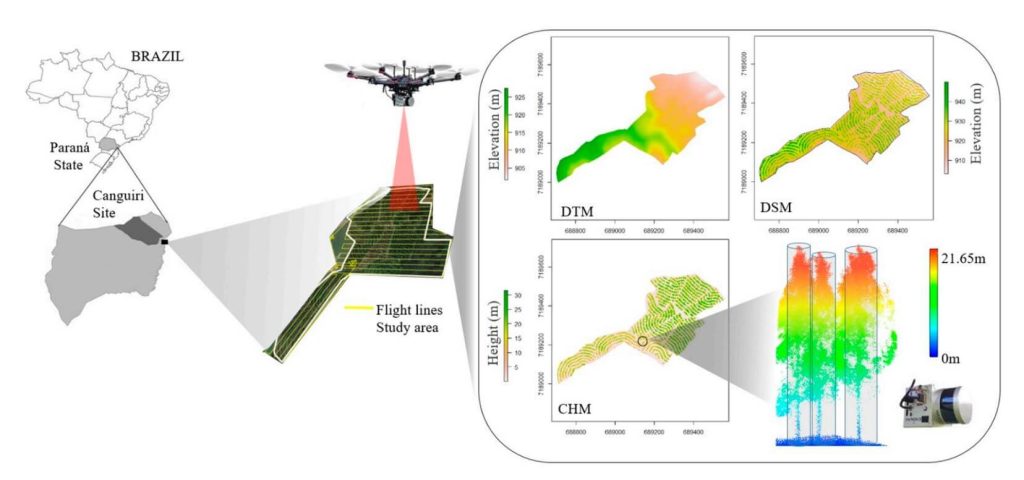
Accurate forest parameters are essential for forest inventory. Traditionally, parameters such as diameter at breast height (DBH) and total height are measured in the field by level gauges and hypsometers. However, field inventories are usually based on sample plots, which, despite providing valuable and necessary information, are laborious, expensive, and spatially limited. Most of the work developed for remote measurement of DBH has used terrestrial laser scanning (TLS), which has high density point clouds, being an advantage for the accurate forest inventory. However, TLS still has a spatial limitation to application because it needs to be manually carried to reach the area of interest, requires sometimes challenging field access, and often requires a field team. UAV-borne (unmanned aerial vehicle) lidar has great potential to measure DBH as it provides much higher density point
cloud data as compared to aircraft-borne systems. Here, we explore the potential of a UAV-lidar system (GatorEye) to measure individual-tree DBH and total height using an automatic approach in an integrated crop-livestock-forest system with seminal forest plantations of Eucalyptus benthamii.
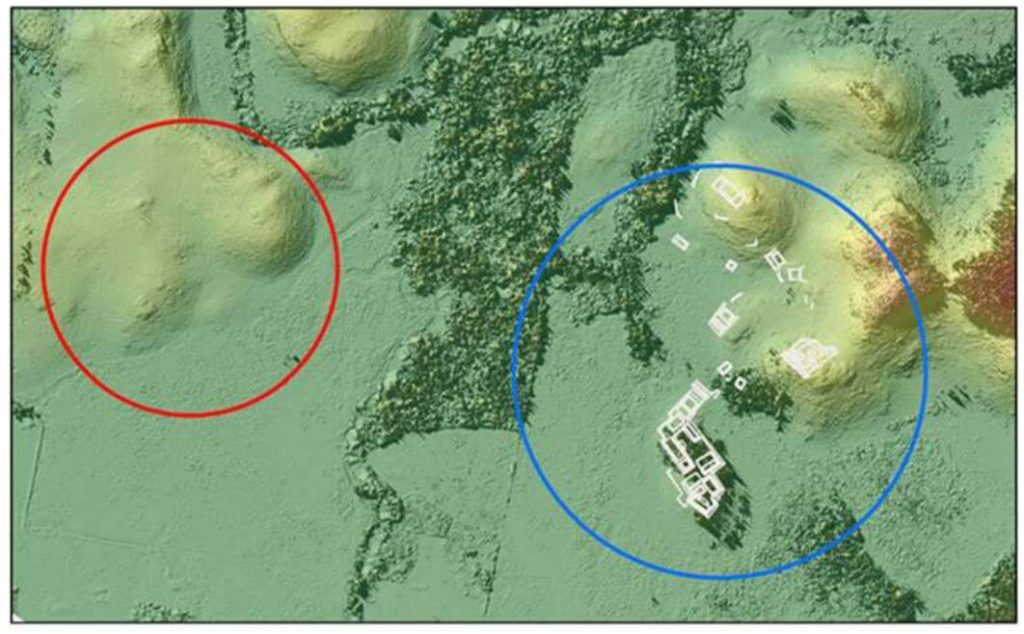
We conducted unmanned aerial vehicle lidar missions in the Maya Lowlands between June 2017 and June 2018 to develop appropriate methods, procedures, and standards for drone lidar surveys of ancient Maya settlements and landscapes. Three site locations were tested within upper Usumacinta River region using Phoenix Lidar Systems: Piedras Negras, Guatemala, was tested in 2017, and Budsilha and El Infiernito, both in Mexico, were tested in 2018. These sites represent a range of natural and cultural contexts, which make them ideal to evaluate the usefulness of the technology in the field. Results from standard digital elevation and surface models demonstrate the utility of deploying drone lidar in the Maya Lowlands and throughout Latin America. Drone survey can be used to target and efficiently document ancient landscapes and settlement. Such an approach is adaptive to fieldwork and is cost effective but still requires planning and thoughtful evaluation of samples. Future studies will test and evaluate the methods and techniques for filtering and processing these data.
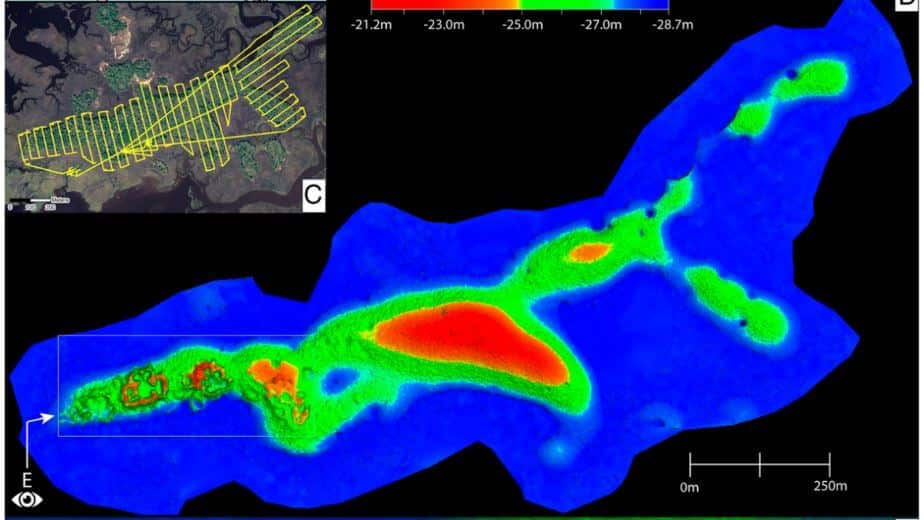
Drone-mounted, high-resolution light detection and ranging reveals the architectural details of an ancient settlement on the Gulf Coast of Florida without parallel in the Southeastern United States. The Raleigh Island shell-ring complex (8LV293) of ca. 900 to 1200 CE consists of at least 37 residential spaces enclosed by ridges of oyster shell up to 4 m tall. Test excavations in 10 of these residential spaces yielded abundant evidence for the production of beads from the shells of marine gastropods. Beads and other objects made from gulf coastal shell were integral to the political economies of second-millennium CE chiefdoms across eastern North America. At places as distant from the coast as the lower Midwest, marine gastropods were imported in raw form and converted into beads and other objects by craftspeople at the behest of chiefs. Bead making at Raleigh Island is exceptional not only for its level of production at the supply end of regional demand but also for being outside the purview of chiefly control. Here we introduce the newly discovered above-ground architecture of Raleigh Island and outline its analytical value for investigating the organization of shell bead production in the context of ancient political economies. The details of shell-ring architecture achieved with drone-mounted LiDAR make it possible to compare the bead making of persons distributed across residential spaces with unprecedented resolution.

The Cerrado, the most biologically diverse savanna in the world, is threatened by anthropogenic activities, and requires development of effective environmental policies spanning local to global scales. Remotely Piloted Aircraft Systems (RPAS) can dramatically reduce the costs and time of surveys and evaluation of these regions. The objective of this article is to demonstrate the potential of visual (RGB) and Light Detection and Ranging (LIDAR) sensors on RPAS for physical characterization of landscapes in the Cerrado biome. Analyses on vegetation structure were performed, with the number of trees automatically counted. The average height of the trees obtained with the RGB sensor was significantly lower than the obtained by LIDAR, demonstrating the limitation of Structure from Motion data in representing the landscape with denser vegetation. Automatic counting of trees with LIDAR data were equal to 1825 on the whole study area, and 245 inside the ecological study area parcels.